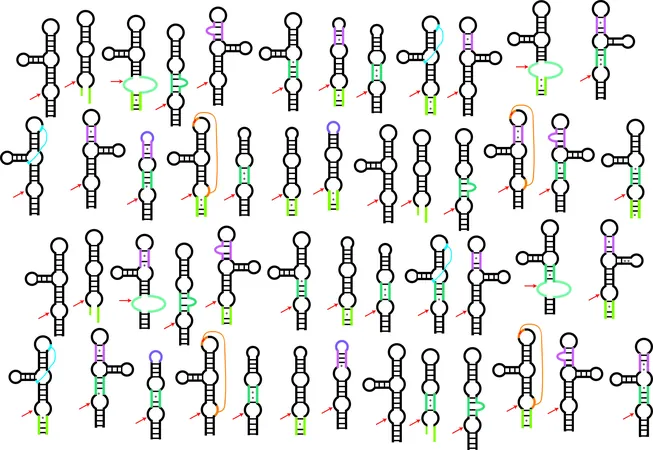
Shocking Scurvy Comeback! Australian Man’s Struggle with an Ancient Disease Amid Rising Living Costs
2024-10-25
Author: Mei
Introduction
In an alarming twist of modern health trends, an Australian man has been diagnosed with scurvy, a disease typically associated with sailors of the 18th century. This condition, resulting from a severe deficiency in vitamin C, signals a worrying trend as it re-emerges in the context of poor dietary habits and soaring living costs.
The Case of an Australian Man
The case concerns a middle-aged man from Perth, Western Australia, who presented with painful red-brown spots on his legs, initially mistaken for a rash. Medical professionals were taken aback to discover his condition, usually linked to historical maritime voyages, in a contemporary patient. According to a report published in the medical journal BMJ Case Reports on September 22, further examinations—including blood tests, a CT scan, and skin biopsies—failed to identify the cause of his alarming symptoms.
Uncovering the Causes
As the rash progressed to his hands, health care providers at Sir Charles Gairdner Hospital dug deeper into the man's personal circumstances. They soon uncovered troubling details about his living situation. Struggling financially, he often opted for low-cost, processed foods, neglecting necessary fruits and vegetables. He even resorted to skipping meals— a lapse that had become increasingly common in recent weeks.
Impact of Bariatric Surgery
In his early 50s, the man had undergone bariatric surgery eight years prior, a procedure known to increase the risk of dietary deficiencies. Compounding his health woes, he had also ceased taking the prescribed vitamin and mineral supplements due to financial constraints, intensifying his nutritional shortfalls.
Diagnosis and Treatment
The grim reality was confirmed with further testing, revealing the man’s vitamin C levels were alarmingly undetectable. Scurvy had set in. Fortunately, after receiving a regimen of nutritional support—including a daily intake of 1,000mg of vitamin C, 5mg of folic acid, and a multivitamin—his health began to improve. Doctors also implemented a tailored meal plan, encouraging the addition of one lemon to his daily diet to boost vitamin C intake.
Surprising Discovery
Dr. Andrew Dermawan, a leading physician involved in the case, expressed his surprise at encountering scurvy in today's world, emphasizing that it’s generally considered a relic of the past. Symptoms of the disease often include skin discolorations, fatigue, joint pain, swollen gums, and easy bruising—a cocktail of distress that many would not associate with modern healthcare.
Broader Implications
Notably, while scurvy is easily reversible through proper supplementation, the rising cost of food in Australia poses a significant barrier for many families trying to maintain balanced diets. As living expenses soar, Australians increasingly rely on budget foods that lack essential nutrients, hinting at an alarming shift in dietary health that could see more citizens facing diseases once believed to be long eradicated.
Conclusion
This case serves as a stark reminder of the hidden toll that economic pressures can inflict on basic nutritional health—a call to action for both individuals and policymakers to prioritize accessible, nutrient-rich food options for all. In a time of uncertainty and rising prices, could we be witnessing the resurgence of not just scurvy, but other nutritional deficiencies as well? The answer may lie in how we respond to the ongoing cost-of-living crisis.




 Brasil (PT)
Brasil (PT)
 Canada (EN)
Canada (EN)
 Chile (ES)
Chile (ES)
 España (ES)
España (ES)
 France (FR)
France (FR)
 Hong Kong (EN)
Hong Kong (EN)
 Italia (IT)
Italia (IT)
 日本 (JA)
日本 (JA)
 Magyarország (HU)
Magyarország (HU)
 Norge (NO)
Norge (NO)
 Polska (PL)
Polska (PL)
 Schweiz (DE)
Schweiz (DE)
 Singapore (EN)
Singapore (EN)
 Sverige (SV)
Sverige (SV)
 Suomi (FI)
Suomi (FI)
 Türkiye (TR)
Türkiye (TR)